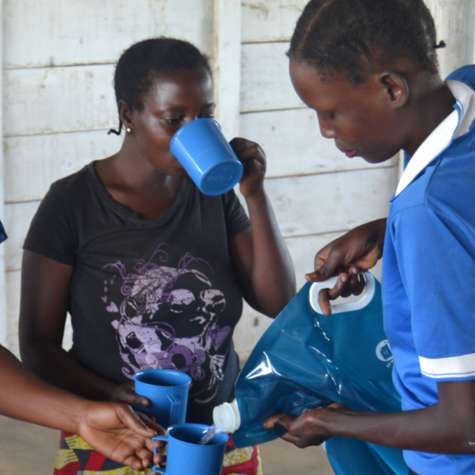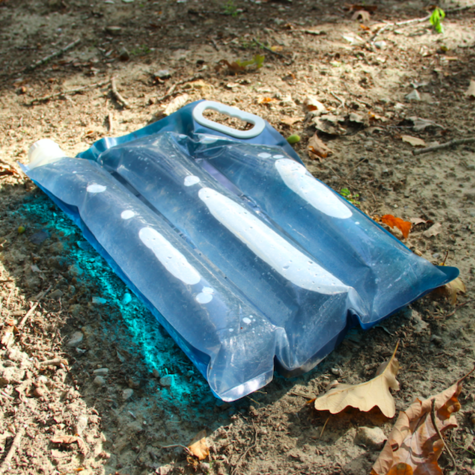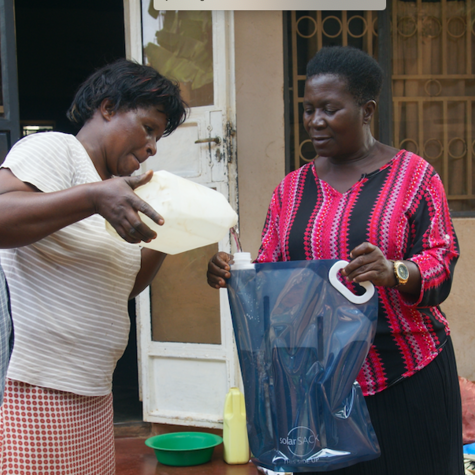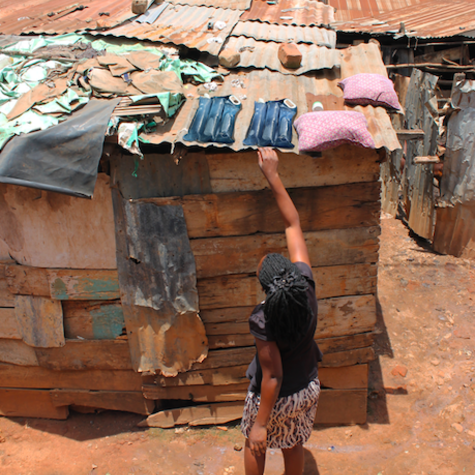D&T #04 – “Streamline solutions”
- Fergus Telfer

- Mar 27, 2020
- 8 min read
The three previous blog posts have explained my research into what the world water crisis is, how we are using the water we have and how case studies are dealing with water shortages. Each post has been a snapshot of issues and each time the human effects they’re having have been discussed to personalise the problem. The global problem will not be solved with global solutions. Instead solutions best suited to local situations will all help to manage the water we do have and source more. This post will discuss some of these proposed solutions as well as investigate were product design engineering can be utilised.
One major solution that has been proposed in desalination. Less than 1% of the world’s water is useable fresh water and by 2040 it’s predicted that demand will be 40% greater than the supply [Oasys]. The logic of desalinisation is simple, if we need more water to meet demands, why not make more? Currently, it is becoming popular in water stressed regions such as the Middle East; Saudi Arabia and the UAE are responsible for about a quarter of all desalination [CNBC]. The challenge of desalination is that saltwater is chemically a different solution as apposed to water with salt. This makes it traditionally difficult, energy intensive and expensive to desalinated. There are two primary schools of thought; separating the water from salts by boiling it and reverse osmosis [CNBC]. Reverse osmosis involves forcing the water through a membrane at extremely high pressure. One such desalination plant is the Carlsbad Plant in San Diego. It is the largest desalination plant in the Western Hemisphere and can produce close to 50 million gallons of drinking water per day [Calsbad]. However, whilst desalination provides the county with a reliable water supply, it costs approximately twice as much as importing water [CNBC]. This is potentially an unfair comparison as the initial investments are significant for new water plants whilst existing infrastructures that have been in place for decades have fewer associated costs. Reverse osmosis is typically 50% efficient which means half of the intake becomes freshwater and half is returned to the sea with double salt concentration, this is called brine. Globally, 37 billion gallons of brine are produced per day, that’s more than freshwater from desalination [CNBC]. Due to the higher salt content, brine naturally sinks to the seabed which can be harmful to marine life.

The associated drawbacks of desalination include the energy required, relatively high costs and potential environmental impacts. These drawbacks are restricting its current use but as any child with a lemonade stand on a hot day knows, it’s all about supply vs demand. What I mean by that is that investors have seen that by 2050, five billion people will face water shortages [Quartz] and to investors, that means there’s money to be made. As freshwater’s value increases over the next century, fortunes will be made by the company with the best desalination technology. Companies are racing to combine science and engineering for the cheapest, most efficient solutions. One such company is Oasys; presenting itself in a thin vail of environmental values, the company has developed a new method of desalination called forward osmosis. Forward osmosis uses a salt solution to draw water through a membrane which removes 99% of impurities, thus negating energy intensive pressurising or heating. The draw solution is then separated using low grade heat or a second membrane and can be re-used in a closed loop system [Oasys].

The process can purify water with up to five time the salinity of seawater but is most efficient at low salinities (eg brackish water) where 95% of water can be recovered. The process is ideal for recovering waste waters in industries such as power generation (the biggest global industrial use of water), oil and gas fracking, and mining. Forward osmosis is being market to these industries as it could save companies up to 60% on water treatment as it is less chemically and energy intensive than current alternatives. It can even be employed to reduce liquid discharge to zero, according to Oasys.
Another young ambitious company muscling into the water purification industry is Bluewater. The Swedish company was born after Swedish founder, Bengt Rittri, was fed up with the choice of imported bottled water or “contaminated” tap water. Droughts in Sweden, a country riddled with lakes, back in 2017 and 2018 spurred him on make clean water portable without single-use plastic bottles that ultimately, put micro-plastics back into the water cycle. One million plastic bottles are bought worldwide every minute and they’re filling our oceans with microplastic [Bluewater]. Bluewater produces compact water purifiers that use their SuperOsmosis technology to filter out 99.7% of waterborne contaminants [Bluewater]. SuperOsmisis is Bluewater code for their high efficiency reverse osmosis which as we all now know is filtering through a membrane at high pressure. This one is “super” because it is an improvement; longer filter lives, lower energy use and higher flow rates mean no need for large tanks. Units can be used at stadiums, events, isolated areas, homes and for emergency aid. It makes sense to me, water aid is often delivered in the form of thousands of plastic bottles, Bluewater eliminates this. Brackish water, seawater or local wells would be a much more sustainable source, these units enable access to them.

Desalination isn’t the only way to access previously unusable water. For over 50 years Windhoek, the capital of Namibia, has been recycling the city’s raw sewage into drinking water. Namibia is a country with no running rivers, it is even named after a desert. The capital has been forced to find innovative sources of water to supplement the local reservoirs and dams. Now, the plant supplies the city with a quarter of its freshwater [Quartz]. Justina Haihambo, a process engineer, explains the process as [PRI]:
“Everything is done biologically, by the organisms… the bacteria help digest the human waste and pull it out of the water, essentially mimicking what happens in nature but a whole lot faster”
Biological activity helps to clean the water before carbon filtration and disinfection stabilises the water for totally clean drinking water. There is definitely a strong negative perception around the world of recycling water as tainted water supplies have been infamous sources of deadly diseases. However, technologies like this will only save cities as water shortages grow if water usage is reduced. As we saw in Cape Town, conserving water in the home is a key tool that must be utilises by everyone to help with the bigger problem.


Cleaning water is a problem that’s faced humans for thousands of years and is still a daily practice for many rural communities, particularly in developing areas. Infact, two billion people are dealing with unsafe water worldwide and 80% of illness in those areas are linked to unclean water [SolarSack]. Product design engineering can directly help to solve this problem with innovative new solutions. One product at the forefront of this field is SolarSack, a young Danish start-up with one product and one goal; to help communities that have to clean their own water do so cheaply, sustainably and securely. SolarSack is a four litre plastic foil sack that uses UVA and UVB rays from the sun to purify water. The sack is left in the sun for four hours to kill waterborne pathogens. This removes the need to boil water; saving 40kg of carbon dioxide for less than a fifth of the price per 1000 litres [SolarSack]. A sack can be manufactured for €0.27 and sold for €0.35 according to Alexander Locke’s (CTO and Founder) presentation at the ClimateLaunchpad Final in 2017.
Desalination and purifying technologies clearly increase available sources and streamlines industry consumptions but how we transfer that water can also be improved. My research showed that many cities’ and agricultural water infrastructures are old and inefficient due to many problems such as leakages. One company making a splash in improving efficiencies in industry, from agriculture to construction, is Xylum. The company owns many other brands that specialise in a variety of efficient pumps and intelligent monitors [Xylum]. If business buzzwords alone solved problems, the world’s water crisis could be singlehandedly taken down by Xylum. They focus on water “productivity”, “quality” and “resilience” to “solve water”. In reality, we need multibillion dollar companies like this investing in improving their technologies so that booster pumps in city networks can get water to the top floor of sky scrapers with less energy, or move sewage out faster with live monitoring to improve systems.

The final company I wanted to talk about is Ecolab. It is another industry focussed water management company that owns Nalco Water, which helps manufactures reduce their water footprint. They opened the Water University, a high-tech learning environment to educate businesses about water usage, believing that education is the answer. They offer course from a few days to six months to share expertise in specific industry best practices with the latest technologies [Ecolab]. One tool they use is 3-D TRASAR; it is a new smart monitor system to track business water uses and analysis the data. They believe we should be utilising the latest cutting edge technology such as big data and the internet of things to improve existing businesses. Their aim is to help their customers save 300 billion gallons of water annually as this is the equivalent of one billion people, the expected amount the world’s population will grow by 2030.
A complex and vast problem needs a variety of solutions, each one tailored to specific situations for the best monetary, energy and water efficiencies. My point is that there will be no magic cure for the crisis. Instead, I have narrowed my opinions down to four broad points of improvements. These steps are based from the research I have down over the past two months and are in no way an all-inclusive list:
1. Cities in water-stressed regions diversify their water sources.
Climate change is making rains less frequent, droughts and severe weathers more common. We cannot continue to solely rely on traditional sources in these regions. Location dependent, desalination and recycling water can be viable options. Aquifers are not long term solutions.
2. Encourage everyone to use less water by valuing what they use and being aware that it is a finite resource - including hidden water footprints.
Everyone has a water footprint and that includes more than just flushing the toilet; diet, clothes, transport, energy and occupation all consume water. Water efficient appliances, smart monitors and diet awareness can all help to reduce water consumption in the home and encourage conscious positive choices.
3. Use innovation to bring cheaper, more sustainable options to developing countries so that everyone on our planet has access to clean water.
This has already received much press coverage in the West and was not the main effort of my research. Even with substantial aid efforts by major charities and foreign Governments, problems persist. Creative, long-term solutions are essential to help everyone access their right to water.
4. Streamline agricultural and industrial water uses through utilising others’ expertise, recycling water and taking responsibility for water treatment.
The vast majority of world water is used by agriculture. Food production is driven by necessity in less developed regions and diet choices in more developed regions. Whilst improvements are being made, we cannot sustain current eating habits. There simply isn’t enough water in the world. Water use analysis will drive more water efficient growing and manufacturing methods as water becomes more expensive.

Unknowingly, we have lived through the Golden Age of water. Population growth, climate change, corporate greed and blissful ignorance have created the perfect storm for mass water shortages. Over the next century we will look back at this time and schoolchildren will title essays; ‘Which key warning signs were ignored leading to the water crisis?’. Change will only be driven by valuing this invaluable resource at what it will be worth as stresses grow, rather than what it’s worth now. Unfortunately, the poorest areas in hot climates will be the first and worst affected. To curve the current trend; businesses, farmers, cities and individuals need to act to reduce their water footprint like their lives dependent on it, because they do.
Sources:






















Comments